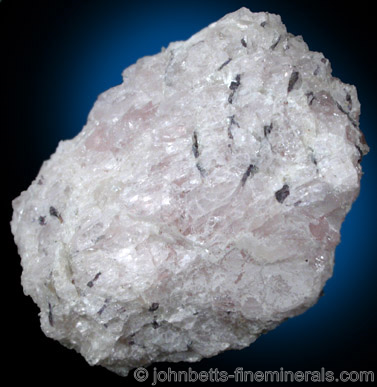The Mineral coesite

Coesite is a very rare mineral that forms in unique ultra high metamorphism usually as a result of meteorite impacts. It was named after American chemist Loring Coes, Jr. (1915-1978), who first synthesized Coesite in 1953 before it was naturally discovered in Barringer Crater in 1960.
Crystal System
Monoclinic
Properties
Streak
White |
Hardness
7.5 - 8 |
Transparency
Transparent to translucent |
Specific Gravity
3.0 |
Luster
Vitreous |
Cleavage
None |
Fracture
Conchoidal |
Tenacity
Brittle |
Crystal Habits
Occurs only in microscopic prismatic and tabular crystals. It is usually as a white dust or glassy material around Quartz sand pebbles. A synthetic form has been produced with large crystals resembling those of Gypsum.
Click here for a detailed explanation on the crystal structure of Coesite and other forms of silica.
Noteworthy Localities
Natural Coesite has been reported in the Barringer Crater (also known as Meteor Crater) in Coconino Co., Arizona; Sinking Springs Crater, Ohio; the Kentland Crater, Newton Co., Indiana; the Riess-kessel Crater, Bavaria, Germany; Kimberly, South Africa; and the Dora Maira Massif, Piedmont, Italy.
Common Mineral Associations
Iron/Iron-Nickel, Diamond, Pyrope, Quartz, Ellenbergite